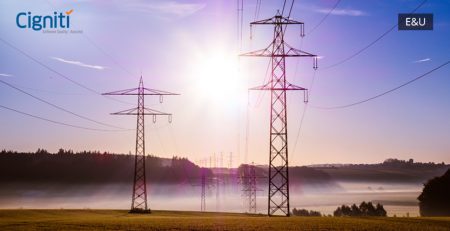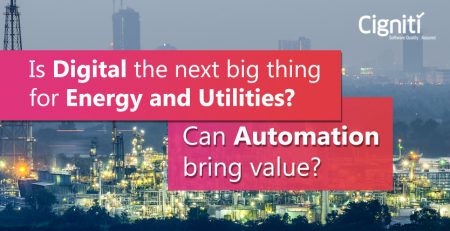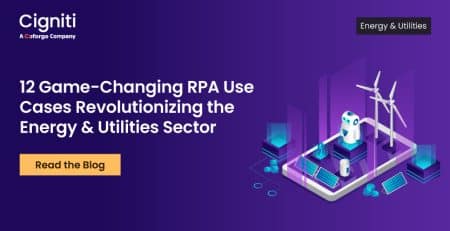How Can Quality Engineering Power Up the Renewable Energy Sources Sector?
The rapid advancements in the tech world are raising the need for highly-efficient, continuous, and reliable energy sources. Meeting these demands and powering an organization’s energy requirements with natural resources may have seemed too far-fetched in the past, but not anymore. Industry 4.0 has also affected the Global Energy market, giving rise to the concept of Energy 4.0, which is making the employment of renewable energy as the primary power source an attainable goal.
The increasingly degrading climate is driving organizations to take more green initiatives and adopt an environmentally-friendly approach in their processes. Organizations are aware, now, more than ever, that it is imperative to cut down on the greenhouse emissions for a sustainable future. The likes of Amazon, Apple, Microsoft are contributing in reducing the carbon emissions by investing in Clean Energy Projects and pledging to run their entire operations on 100% renewable energy. Google has already achieved its target of going 100% renewable a few months ago.
To build a post-fossil future, altering the existing business models to incorporate sustainable strategies is becoming indispensable. The digital evolution of the energy sector has resulted in a significant growth of the Internet of Things with an expected Compound Annual Growth Rate of 17.3%. Leveraging on data and automation, Energy 4.0 can drive a more widespread adoption of renewable sources as a viable alternate for their energy requirements.
Challenges with the Renewable Energy Sector
The potential of renewable sources was never in question. The apprehension to adopt them predominantly stemmed from their unreliability. Moreover, the incapability to store the generated energy made the renewable sources impractical to implement and difficult to harness. Energy 4.0 has resolved these issues with introduction of modern grid technologies and smart metering systems. But the challenge does not end here. There are still several roadblocks that need to be addressed and obliterated to take the leap from carbon-based to carbon-free fuel.
Apart from scalability, one of the major and most critical factors affecting the widespread acceptance of renewable energy is the high capital cost. Although, the fuel is free, the construction cost of the buildings and infrastructure becomes a pain.
A recent BBC Future report showed that over a million Terajoules of energy is consumed in a day. This demand is expected to double in the next forty years. Since, investors are still not convinced about the ROIs on renewable energy, there is a lack of enthusiasm, innovation, and investment needed to meet the rising energy demands. Today, one-fifth of the population is dependent on renewable energy sources such as solar, hydro, wind, and geothermal. Due to the rapid depletion of fossil fuels, this dependency is expected to grow at the rate of 2.6% every year till 2040. Going by this data, demand management may emerge as a prominent hurdle in the coming years. The high capital requirement also makes it difficult for new players to gain entry in the renewable energy market. For ensuring open acceptance of the renewable energy sources, the behavioral change must be managed on individual as well as organizational level.
On the technical front, absence of remote control and control standardization render the implementation process impractical. Combining distributed systems for optimal transmission of the generated energy is also a huge hassle with the current infrastructure.
How can IT enable the change to renewable sources?
To gain traction and widespread acceptance of renewable energy sources, IT will play a crucial role. Continuous energy generation combined with optimal storage options and smart grid development will enable a stable, clean energy supply. The smart grid installations with intelligent metering systems and modern switch gear facilitate automation of the entire process, allowing the provision of remote supervision. By deploying information security at various substations, it will be possible to fight with security threats and vulnerabilities, even at unmanned locations. Network optimization with proper grid management will ultimately yield maximum technical as well as economic benefits, while maintaining a reliable, energy-efficient power supply.
Technologies driving the adoption of alternate energy sources
The future of energy landscape will be predominantly determined by the changing consumer behavior as well technological innovation in AI, Analytics, and robotics. The limitation of fossil fuels has driven the birth to some unconventional innovations such as Digital transformers, LED lighting, Solar photovoltaics, electric vehicles, fracking, biofuels, Clean Coal Technologies, electrochemical windows, etc. Implementing and adopting these will help reduce the carbon emissions and build a more sustainable tomorrow. As automation will take the center stage in the success of renewable energy sector, Big Data, IoT, and cybersecurity will lead the process by aiding control standardization and ensuring compliance with the clean energy goals.
Role of Quality Engineering in facilitating the change
With a smart grid development, Russia has developed its first smart city. Sustainable Development Goals have allowed a deeper penetration of the renewable sources in the Energy and Utilities Sector.
The digitalization of the E&U sector has enabled better management and flexibility between supply and demand. The involvement of multiple touch-points in the generation and transmission of energy calls upon the use of Blockchain technology. The Smart Contracts will ensure compliance with the clean energy goals through a decentralized framework. By employing Digital Twin Technology, it will be possible to continuously monitor multiple touch-points of the grid and mitigate any risks through real-time feedback. By allowing testing in different case scenario, the ‘twins’ will be better equipped at analyzing demand, understanding risks, and providing the required supply. Here, Quality Engineering becomes inevitable in delivering the ideal end user experience by assuring quality, static and synthetic monitoring, and predicting possible future trends.
Conclusion
Establishing an IoT framework consisting of smart grids combined with distributed power generation can result in efficient production and use of renewable sources. Digital Quality Engineering becomes imperative in ensuring the ideal performance of the system through continuous, automated supervision.
Having delivered comprehensive testing services to E&U organizations in the US, UK, and Europe, Cigniti brings higher test coverage, test acceleration, and tool agnostic test frameworks. With an understanding of the massive transformation of the E&U sector, Cigniti brings forth an enriching experience and capabilities that can help your organization to strengthen your energy ecosystem.
Speak to our experts to enrich your QE initiatives and power up your renewable energy sources.





Leave a Reply